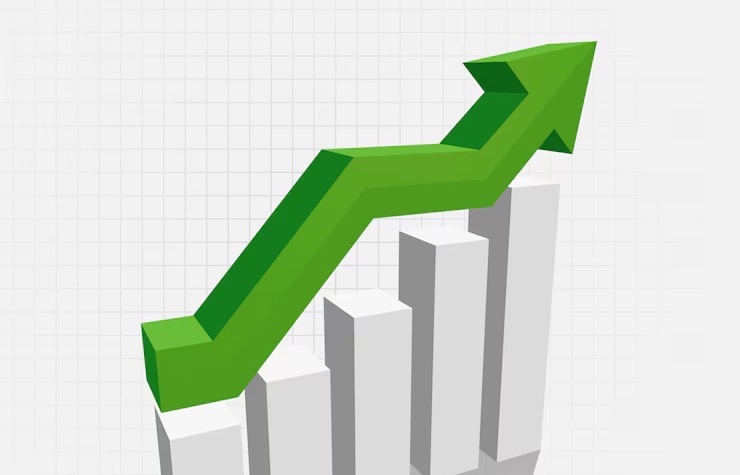Stagflation fears slapped down
 Are there some positive signs in Vietnam’s economy in September and the first nine months of 2012?
Are there some positive signs in Vietnam’s economy in September and the first nine months of 2012?
The gross domestic product (GDP) expanded just 4.73 per cent in the year ending September against corresponding period in 2011 which was far below 5.77 per cent GDP growth in the same period in 2011 and 6.60 per cent growth in 2010 and represented a slight increase over 4.62 per cent growth in 2009’s same period.
The rate, however, is positive on the back of firms being on the woods due to capital distress, high inventory rates and difficulties in sourcing output markets for stabilising and expanding production.
Agriculture, silviculture and fisheries sectors maintained stable production and picked up 2.48 per cent growth in added value. They together contributed 0.4 per cent growth to the GDP. The services sector eyed 5.97 per cent growth in added value and contributed 2.51 per cent to GDP growth.
In respect to industrial production, fairly high growth was witnessed in mining, electricity and water supply areas against slow pace in the processing industry. The construction sector, thanks to increased public spending from 2012’s early third quarter, booked 1.98 per cent growth in the first nine months after remaining unchanged in early months of the year.
Exports grew whereas the budget deficit was pegged back. Social order and security was ensured.
But, September’s consumer price index (CPI) hiked sharply at 2.2 per cent, triggering concerns over a possible comeback of inflation. What is the GSO’s inflation forecast then?
September witnessed the sharpest CPI growth in the year to date. This mainly came from sharp price increases of several products and services in two most recent months such as healthcare and education sector fee hikes.
As usual, the price of commodities often trends upwards in the later months, particularly in the period near the traditional Lunar New Year.
Besides, economic stimulus policies on a global scale made commodities worldwide more expensive, badly affecting the domestic market.
Being aware of this, the prime minister introduced Instruction 25/CT-TTg dated September 26, 2012 fostering management to achieve price stabilisation targets in year-end period.
In this context, the GSO predicted full-year inflation would stay at a single digit only at around 8 per cent.
What will be the GDP growth perspective for this year? What will be the growth fundamental on the back of very low credit and industrial growth pace?
As far as we know a number of stimulus packages were rolled out but the outcome remained modest due to lingering economic uncertainties.
The government is committed to attaining about 5.2 per cent GDP growth this year. Towards this goal, the fourth quarter GDP growth must be around 6.15 per cent which is similar to that one-year ago and far below 7.45 per cent growth booked in fourth quarter in 2010 and 6.99 per cent growth in 2009’s fourth quarter. This 6.15 per cent hike is based in the following factors:
First, the services sector maintains growth momentum in later months as usual thanks to active implications of proposed minimum salary and allowance hike policies.
Second, production, power and water supply businesses maintain fair growth rates whereas processing industry sees better growth when blocks to capital sources are removed and inventory rates fall.
Third, the construction sector has revived thanks to the government’s strong commitment to speeding up capital disbursement at around VND22-23 trillion ($1.04-$1.09 billion) each month.
Will there be stagflation concerns?
When the CPI slightly fell 0.26 and 0.29 per cent in June and July respectively, some experts voiced concerns Vietnam economy could fall into slump combined with deflation.
Things got better, though. As stated above, 4.73 per cent GDP growth, albeit lower compared to those in the past two years, was a positive growth given our top priority of bridling inflation and ensuring stable macro-economy. Rising CPI growth in two recent months came on the back of price upsurges of some essential product and service groups.
Thereby, there needs to be an effective coordination among relevant ministries and sectors in respect to setting suitable time for price revisions as well as revision degrees to avoid causing abrupt CPI growth.
The government has been well aware of this and has introduced a comprehensive suite of measures to get rid of stagflation concerns.
What the stars mean:
★ Poor ★ ★ Promising ★★★ Good ★★★★ Very good ★★★★★ Exceptional
 Tag:
Tag:
Related Contents
Latest News
More News
- Mitsubishi Estate launches Logicross Hai Phong - a milestone in logistics evolution (November 20, 2024 | 14:32)
- Semiconductor workforce partnerships deliver industry-relevant training (November 20, 2024 | 10:58)
- German Quickpack to invest $31.7 million in Long An province (November 20, 2024 | 09:31)
- Foreign-invested enterprises drive logistics investment in the southeast region (November 20, 2024 | 09:27)
- Chile visit underscores trade benefits (November 19, 2024 | 10:00)
- Trump’s second term impacts sci-tech activities and industry 4.0 technologies (November 18, 2024 | 10:00)
- Vietnam eyes nuclear revival to bolster energy security (November 14, 2024 | 16:46)
- Kyokuyo completes $13.5 million seafood factory in Vietnam (November 14, 2024 | 12:19)
- VinFast receives $3.5 billion funding from Vingroup and Pham Nhat Vuong (November 14, 2024 | 06:38)
- Localities sprint to reach FDI targets (November 13, 2024 | 10:00)























 Mobile Version
Mobile Version